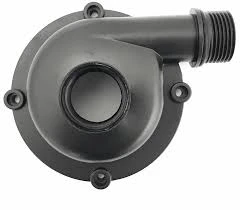Mobile:+86-311-808-126-83
Email:info@ydcastings.com
High-Pressure Die Casting Techniques for Aluminum Alloys in Manufacturing Applications
The Advantages of Aluminium High Pressure Die Casting (HPDC)
Aluminium High Pressure Die Casting (HPDC) is becoming increasingly significant in modern manufacturing due to its efficiency, precision, and versatility. This method involves forcing molten aluminium into a steel die under high pressure, allowing for the production of complex shapes and high-quality components with excellent surface finishes. As industries demand lighter and stronger materials, HPDC is positioning itself as an ideal solution for various applications.
One of the primary advantages of HPDC is its ability to produce lightweight components without compromising strength. Aluminium has a lower density compared to other metals like steel, making it a prime material for applications where weight reduction is crucial. This feature is particularly important in industries such as automotive and aerospace, where lighter components contribute to better fuel efficiency and performance.
The Advantages of Aluminium High Pressure Die Casting (HPDC)
Another notable aspect of aluminium HPDC is its suitability for mass production. The speed of production is one of the standout features of this process; the cycle time for casting can be as short as a few seconds for small components. This efficiency makes it feasible for manufacturers to produce large volumes of parts quickly, meeting the demands of industries like automotive which require high output rates.
aluminium hpdc casting

HPDC also allows for the incorporation of intricate designs, enabling manufacturers to develop complex geometries that would be challenging, if not impossible, with traditional manufacturing methods. This capability opens up new avenues for product design, allowing for innovation in various fields, such as consumer electronics, industrial equipment, and furniture.
One challenge associated with aluminium HPDC, however, is the initial cost of the dies and machinery. High-quality steel dies are required to withstand the intense pressures and heat, which can represent a significant upfront investment. Despite this, the long-term benefits often outweigh these costs. With the durability of steel dies, they can produce millions of parts over their lifespan, drastically reducing the per-part cost.
Moreover, the recycling potential of aluminium enhances the sustainability aspect of HPDC. Aluminium can be recycled multiple times without losing its properties, making it an environmentally friendly choice in manufacturing. As industries continue to seek sustainable practices, more companies are likely to adopt aluminium HPDC processes.
In conclusion, aluminium HPDC is an indispensable technology in today’s manufacturing landscape. Offering lightweight, high-strength components with excellent surface quality and rapid production rates, it meets the growing demands of various industries. Despite the initial setup costs, its long-term economic and environmental benefits solidify its position as a preferred method for producing high-quality aluminium parts. As technology continues to advance, we can expect further innovations in HPDC processes, further solidifying its role in the future of manufacturing.











